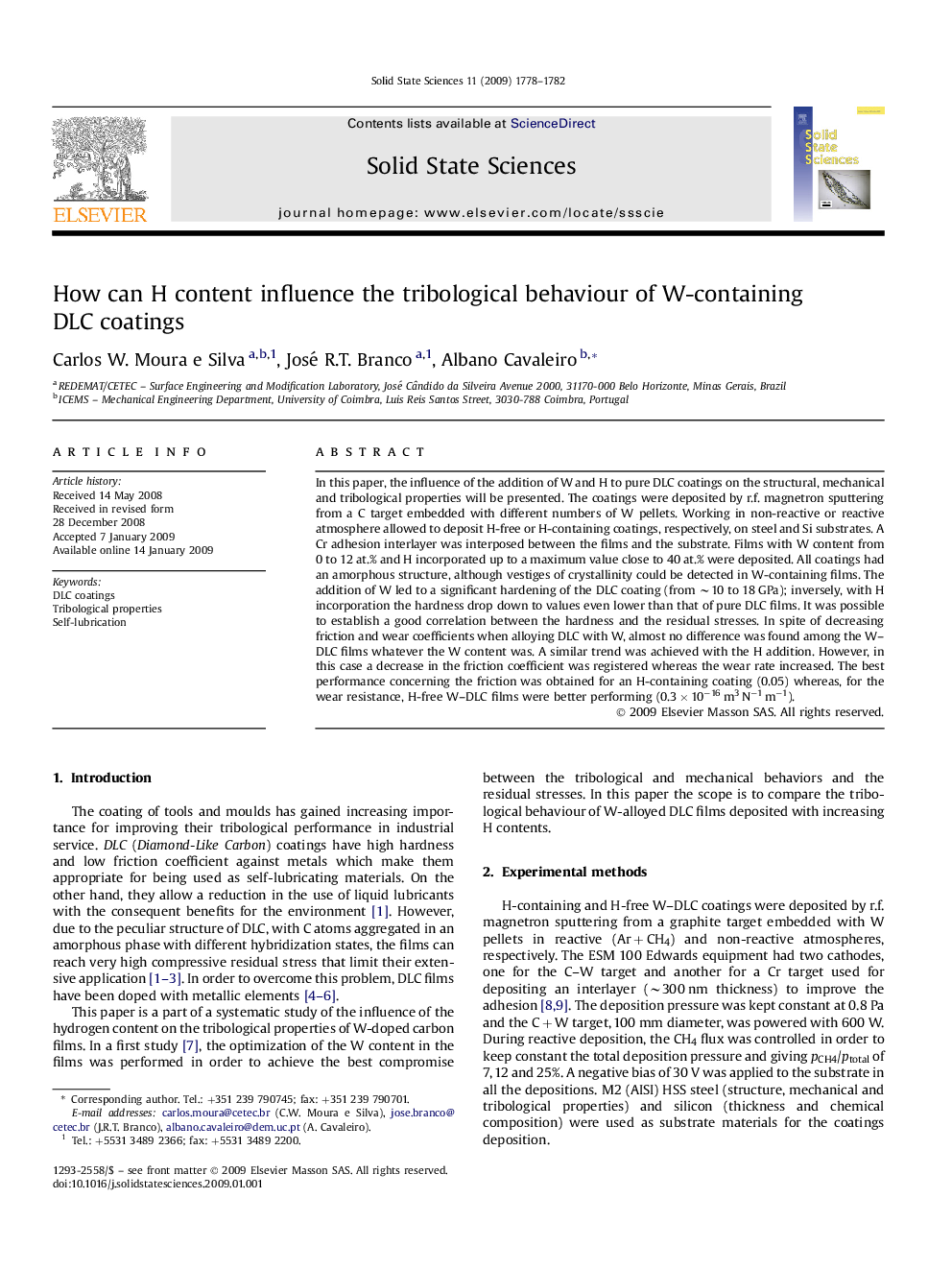| Article ID | Journal | Published Year | Pages | File Type |
|---|---|---|---|---|
| 1506186 | Solid State Sciences | 2009 | 5 Pages |
In this paper, the influence of the addition of W and H to pure DLC coatings on the structural, mechanical and tribological properties will be presented. The coatings were deposited by r.f. magnetron sputtering from a C target embedded with different numbers of W pellets. Working in non-reactive or reactive atmosphere allowed to deposit H-free or H-containing coatings, respectively, on steel and Si substrates. A Cr adhesion interlayer was interposed between the films and the substrate. Films with W content from 0 to 12 at.% and H incorporated up to a maximum value close to 40 at.% were deposited. All coatings had an amorphous structure, although vestiges of crystallinity could be detected in W-containing films. The addition of W led to a significant hardening of the DLC coating (from ∼10 to 18 GPa); inversely, with H incorporation the hardness drop down to values even lower than that of pure DLC films. It was possible to establish a good correlation between the hardness and the residual stresses. In spite of decreasing friction and wear coefficients when alloying DLC with W, almost no difference was found among the W–DLC films whatever the W content was. A similar trend was achieved with the H addition. However, in this case a decrease in the friction coefficient was registered whereas the wear rate increased. The best performance concerning the friction was obtained for an H-containing coating (0.05) whereas, for the wear resistance, H-free W–DLC films were better performing (0.3 × 10−16 m3 N−1 m−1).
Graphical abstractFriction coefficients of DLC-based coatings deposited with and without W and H. Micrographs of the wear track and the transfer layer on the 100Cr6 ball, after 26,500 sliding cycles, are shown inset.Figure optionsDownload full-size imageDownload as PowerPoint slide
